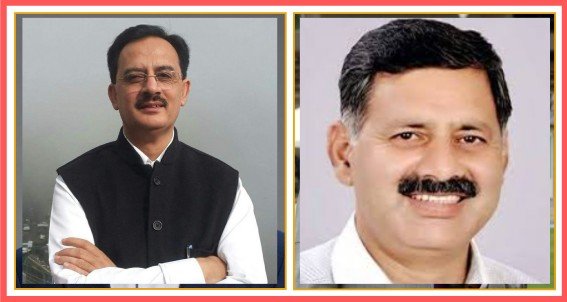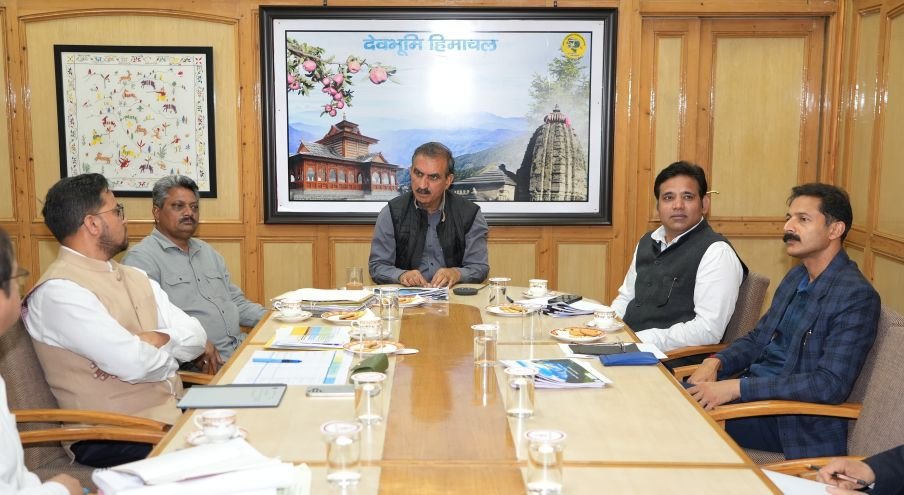
Congress Accuses Centre of Unfair Terms in Medical Device Park Deal, Defends Return of Central Funds
- HAMIRPURHIMACHALKANGRASIRMOUR
- April 20, 2025
- No Comment
- 34
A heated political exchange has emerged in Himachal Pradesh over the now-controversial Medical Device Park project, with the Congress-led state government accusing the Centre of imposing financially damaging conditions under the guise of development. In a sharp rebuttal to Union Health Minister Jagat Prakash Nadda’s criticism, Himachal’s Industries Minister Harshwardhan Chauhan and Technical Education Minister Rajesh Dharmani stated that the state government has not abandoned the project, but instead chosen to move forward independently to safeguard public resources.
The ministers refuted allegations made by Nadda, who claimed the Congress government had derailed a centrally funded initiative worth ₹350 crore. Clarifying the state’s position, Chauhan and Dharmani emphasized that while the Centre had committed ₹100 crore in assistance, the financial and policy conditions tied to the grant would have placed an enormous long-term burden on the state exchequer. In their view, these stipulations prioritized the interests of industrial investors over the welfare of Himachal Pradesh’s citizens.
Central to the dispute is the allocation of land for the proposed industrial park. Under the Centre’s plan, nearly 300 acres of valuable land—estimated to be worth ₹500 crore—was to be handed over to private entities at a symbolic rate of ₹1 per square meter, effectively pricing the entire parcel at just ₹12 lakh. “How can giving away ₹500 crore worth of state land for ₹12 lakh ever be justified?” the ministers asked, demanding that Nadda explain the logic behind what they termed a blatant undervaluation of public assets.
The state government also objected to other mandatory provisions attached to the funding, including supplying electricity to industrialists at ₹3 per unit when the state itself buys power at over ₹7 per unit. Added to this were the expectations of free water supply, warehousing facilities, and maintenance for a decade—expenses that, according to state officials, would have cost Himachal crores annually without ensuring any substantial fiscal return.
Even more concerning for the state, the ministers argued, was the revenue structure proposed for the park. Since Goods and Services Tax (GST) is collected in the state where the final product is sold rather than manufactured, Himachal would not have benefited from GST proceeds despite hosting the production units. Moreover, the agreement included a 70 percent rebate on state GST for 10 years, further eroding any potential economic benefit from the facility.
Faced with these limitations, the Congress government, led by Chief Minister Thakur Sukhvinder Singh Sukhu, decided to take a bold step. It returned ₹25 crore already received from the Centre and committed to developing the Medical Device Park with state resources alone. According to Chauhan and Dharmani, this decision was guided by long-term vision and the need to preserve the state’s economic sovereignty rather than chasing short-term political optics.
The ministers underlined that the project has not been scrapped but is being realigned to serve the true interests of Himachal Pradesh. The government, they said, is committed to attracting investment that respects the value of local resources and contributes meaningfully to the state economy without forcing disproportionate financial compromises.
This episode has added fuel to the broader debate on the balance of power and resources between state and central governments in India’s federal structure. As Himachal Pradesh positions itself for sustainable development, the Congress administration’s move has sparked both criticism and applause—depending on which side of the political aisle one stands on.
#HimachalPolitics #MedicalDevicePark #LandRow #CongressVsBJP #DevelopmentDebate
This is a web-generated news web story.



